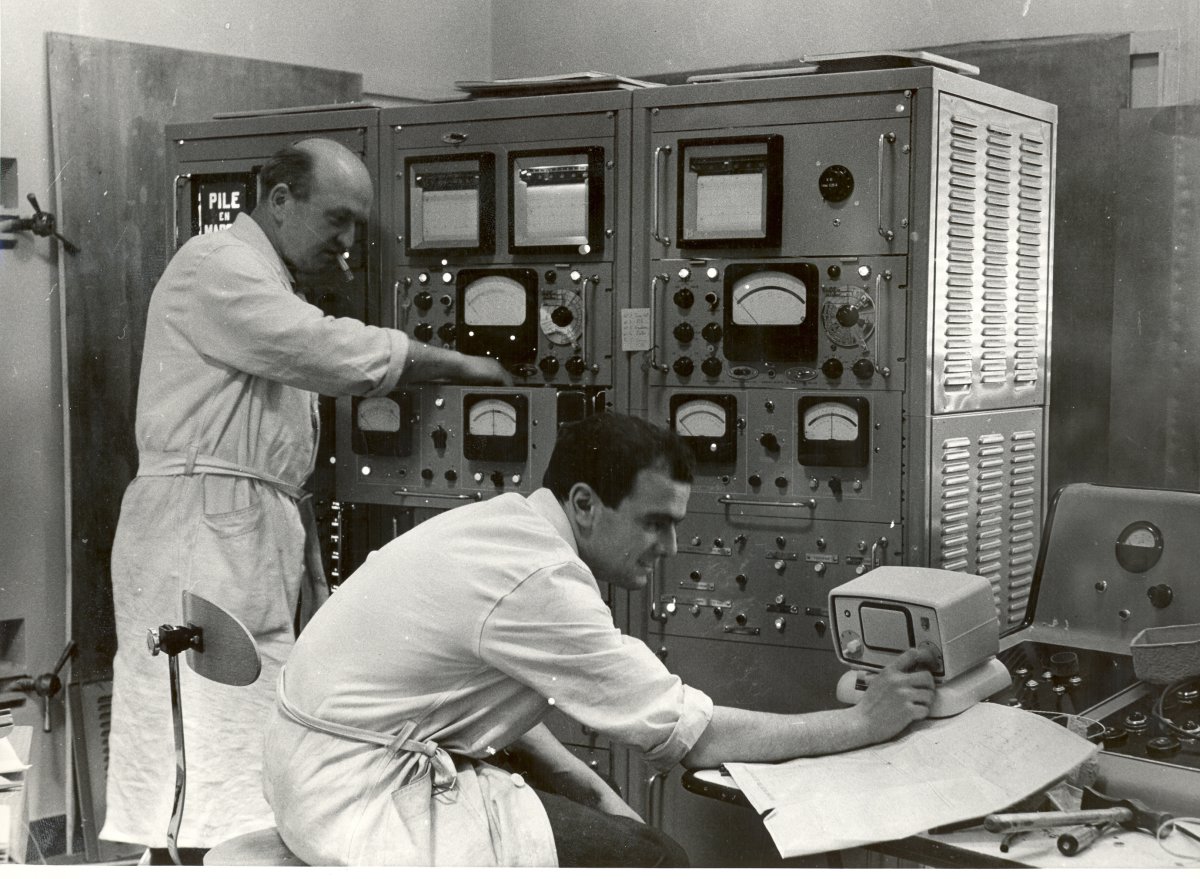Gaze into a clear night sky for long enough and a nagging thought will worm its way into your brain: It’s highly probable that intelligent life exists elsewhere in the universe, but if so, why haven’t we found it yet? This is known as the Fermi Paradox and, among several explanations, it has one awfully pessimistic solution: We appear to be alone in the universe because all civilizations end up destroying themselves soon after developing space-capable technology. One way that could happen is through nuclear warfare, a topic hot on the minds of Earth’s most powerful citizens. There are more than 15,000 nuclear warheads secreted around the world, and 90 percent of them are in the hands of the United States and Russia, two nations with a historically frosty relationship. But Iran, a country with no known nuclear warheads, dominates the international conversation. It’s actively testing new weapons-delivery systems, even as world powers attempt to halt the creation of more apocalyptic weapons. As modern history demonstrates, that’s not an easy task.
The world’s eyes on Iran
“There was a whole international community of scientists and engineers working on nuclear physics and learning about nuclear fission from the 1930s on,” explains John Loretz, program director of International Physicians for the Prevention of Nuclear War. IPPNW was awarded the Nobel Peace Prize in 1985 in recognition of its campaign to publicize the human effects of nuclear warfare during the Cold War.
As Iran knows, hiding nuclear technology is extremely tricky.
The information required to develop nuclear weapons has existed for decades, Loretz says. The major barrier to any country’s or group’s nuclear program lies in acquiring the necessary materials — namely enriched uranium, plutonium and weapons-manufacturing plants — without being noticed. As Iran knows, hiding nuclear technology is extremely tricky.
In 2002, a dissident group in Iran alerted the United Nations to a series of secret nuclear-weapons facilities in the country, confirmed by satellite images of plants in Natanz and Arak. In 2009, the United States, Britain and France uncovered another secret nuclear facility in Iran, this one buried inside a mountain. The UN spotted yet another nuclear facility underneath a mountain near Qum in 2012, and in 2013, the Atomic Energy Organization of Iran identified sites for 16 more nuclear power stations. At the time, President Barack Obama estimated that Iran could have a nuclear weapon in just “over a year or so.”
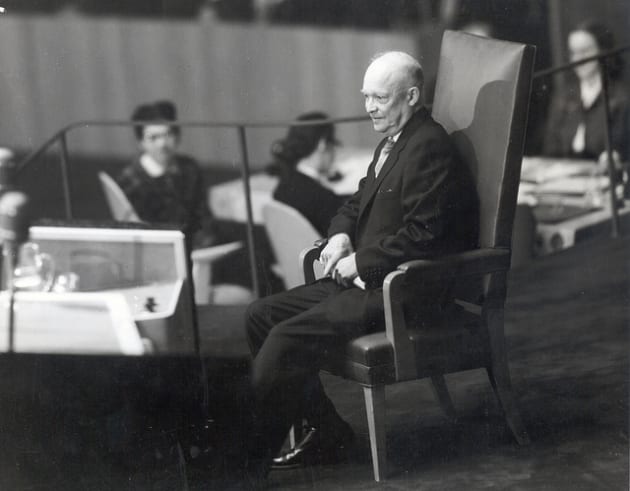
President Dwight D. Eisenhower sits after delivering his “Atoms for Peace” speech at the UN in 1953.
The US and other nations imposed sanctions on Iran, limiting its access to trade and global aid. Only this year have the US and other world powers been able to reach a dealwith Iran aimed at halting its nuclear-weapons programs. Under the deal, Iran will shut down two-thirds of its 19,000 nuclear centrifuges, and over the next 10 years, the country agrees to refine uranium only to the point it can be used in nuclear power plants, not for weapons. Plus, Iran will drastically decrease its reserves of enriched uranium and open all of its nuclear sites to inspectors from the UN’s International Atomic Energy Agency. In return, it receives relief from sanctions. But even today, Iran is balancing cooperation with rebellion: On October 10th, it tested a nuclear-capable ballistic missile, violating a UN ban on such demonstrations.
The country’s atomic aspiration, whether aimed at developing nuclear power or weapons, isn’t new. Iran established its nuclear program in the 1950s — with the blessing of the US government. Under the Atoms for Peace initiative, President Dwight D. Eisenhower’s administration helped establish a nuclear research reactor and power plants in and around Tehran, Iran’s capital. In 1968, Iran (and the US, Russia and most other countries) signed the UN’s Non-Proliferation Treaty, which included pledges for nuclear nations to disarm completely. The US provided nuclear materials and support to Iran until 1979, when its leadership was overthrown twice within the span of one month, followed by the years-long American Embassy hostage crisis.
Despite willfully adding its name to the NPT, Iran has walked a fine line over the years, at times asserting that its nuclear programs were peaceful, while also noting that global powers couldn’t stop it from developing weapons.
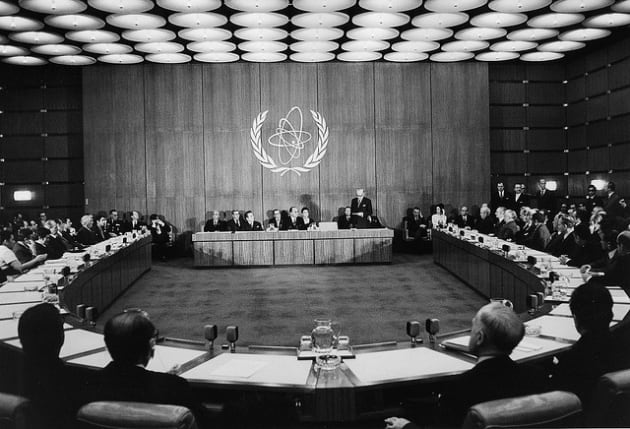
IAEA Director General Dr. Sigvard Eklund addresses the board in 1974.
Iran isn’t the only nation sending mixed nuclear signals — the US has an estimated 7,200 nuclear warheads (some of which were still operated via eight-inch floppy disks in 2014) and Russia has 7,500, even though their names remain on the NPT. The world’s remaining warheads are owned by the UK, France, China, India, Pakistan, Israel and North Korea. These are existing stockpiles — Iran earned international scrutiny in recent yearsbecause it represented a threat of new nuclear weapons.
“If more countries were to acquire nuclear weapons, the likelihood that they will actually be used would go up,” Loretz says. “Not necessarily because any one country would deliberately set out to use them, but through accident, or miscalculation, or escalation, or when deterrence eventually fails.”
A brief history of nuclear technology
Every country that’s built a nuclear arsenal has kept it as secret as possible. However, there’s no way to hide the scientific principles or technologies that spawn from these programs, Loretz says.
“The knowledge genie can’t be put back in the bottle,” as he puts it.
“The knowledge genie can’t be put back in the bottle.”- John Loretz, IPPNW
The US was the first nation to successfully develop, test and deploy nuclear weapons in the 1940s, in a program (now notoriously) called the Manhattan Project. The first nuclear weapons were fission-based, meaning they relied on the splitting of an atom’s nucleus to set off a chain reaction of exploding nuclei, producing incredible amounts of energy. This all requires proper amounts of either enriched uranium or plutonium, two elements that are extremely (and fortunately) difficult to produce.
Oh, and one of the scientists who first demonstrated the possibility of nuclear chain reactions? Enrico Fermi, father of the alien paradox.
The Manhattan Project ushered in Earth’s nuclear age on July 16th, 1945, when researchers detonated a weapon named Trinity in a remote desert of New Mexico. Less than a month later, the US dropped a uranium bomb on Hiroshima, Japan. Three days after that, it unleashed a plutonium bomb on Nagasaki, Japan. In all, the two explosions killed hundreds of thousands and effectively ended World War II.
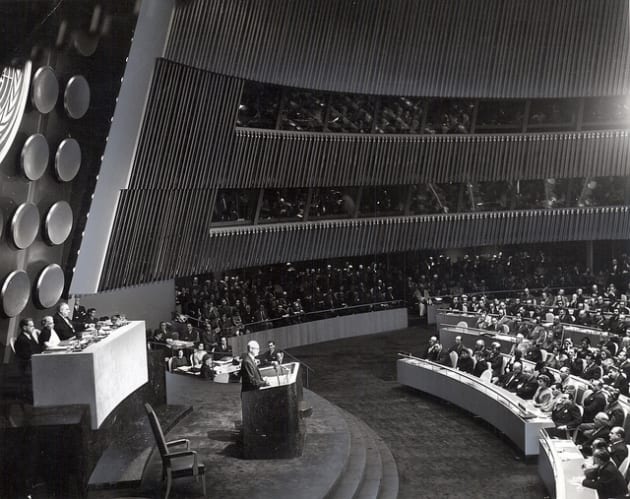
President Dwight D. Eisenhower delivers his “Atoms for Peace” speech at the UN.
The Cold War, a nuclear standoff between the US and Russia, began shortly after. In 1952, the US raised the stakes: It tested the first thermonuclear — or hydrogen — bomb.
Fission-based atomic weapons, like the initial ones tested by the US, can generate energy equivalent to 500,000 tons of TNT. The first hydrogen bomb output the energy equivalent to 10 million tons of TNT — and that wasn’t even a “big” one. Thermonuclear weapons use the immense heat generated by nuclear fission to force two types of hydrogen isotopes together, resulting in a massive explosion and chain reaction. In 1961, the USSR conducted the largest nuclear-weapon test the world had — and has — ever seen. The Tsar Bomba was a 58-megaton thermonuclear weapon that released the equivalent of more than 50 million tons of TNT. That’s the same as 100 full-strength fission bombs.
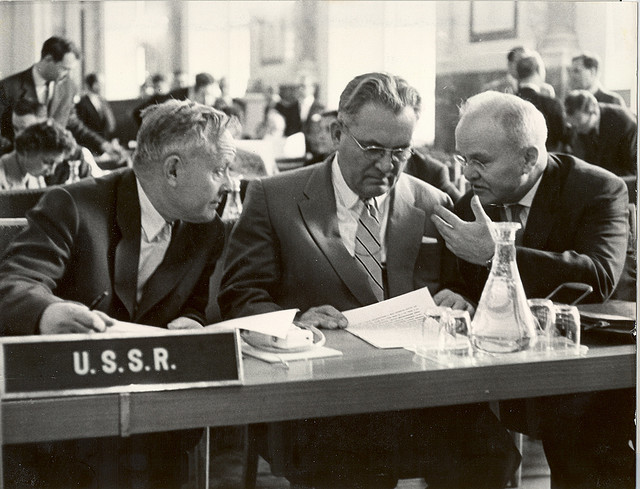
The Soviet delegation converses at the fourth IAEA General Conference in September 1960.
Let that soak in: It’s 1961, the height of the Cold War between the US and the USSR. The US has just conducted the Bay of Pigs operation, a botched invasion of Fidel Castro’s communist Cuba, which pushes the island nation closer to its Soviet allies. Both the US and USSR have growing stockpiles of nuclear warheads. There are American missiles in Italy and Turkey capable of hitting Moscow, and the USSR just tested the largest hydrogen bomb the world has ever seen.
And then, in 1962, the US discovers Soviet missiles in Cuba.
These ballistic missiles are a large part of the nuclear-weapon equation. Early delivery systems relied on a plane dropping a bomb over its intended target. Updated versions placed nuclear weapons inside ballistic missiles that could autonomously travel to set targets thousands of miles away. Modern ballistic missiles can carry multiple weapons to be dropped in different locations or amassed on a single target.
That’s a lot like the missile Iran tested earlier this month.
The worst-case scenario
The Cold War fizzled to an end around 1991, though even today, tensions over nuclear stockpiles remain high worldwide. Loretz notes that some experts worry an Iran arsenal would incite nearby nations to arm themselves, effectively opening the nuclear floodgates. Others fear it’s a play intended to cement Iran as a regional superpower.
However, for Loretz, Iran isn’t even a factor in a worst-case nuclear scenario. There are plenty of horrible outcomes tied to the use of nuclear weapons, he says. “Even the explosion of a single nuclear weapon over a major city would immediately kill tens — perhaps hundreds — of thousands of people, severely injure hundreds of thousands more, completely destroy buildings and other infrastructure over extensive areas, and leave vast tracts of land and water contaminated with radiation,” he explains.
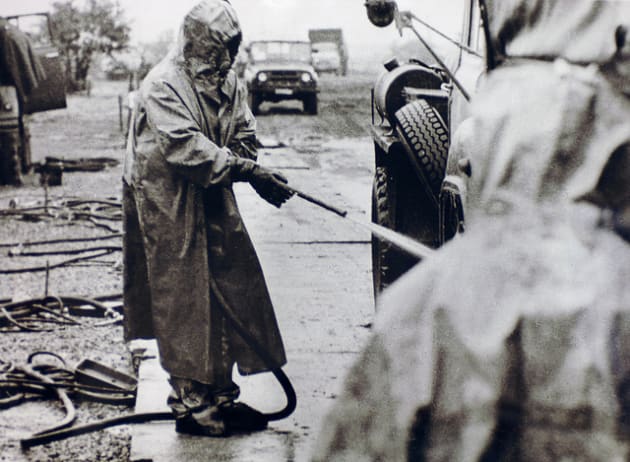
Even non-weapon nuclear plants can fail, as 1986’s Chernobyl disaster in Ukraine demonstrated. In 2011, the Fukushima nuclear plant in Japan similarly melted down.
Loretz’s second-worst outcome would be a “regional nuclear war — say between India and Pakistan.” This would use maybe 100 Hiroshima-size bombs and would cause “severe disruption to the global climate for a decade or more, leading to crop failures and food scarcity that would place 2 billion or more people at risk of starvation from anuclear famine.”
Perhaps unsurprisingly, Loretz’s worst case involves the countries that have always been at the heart of nuclear-weapons debates: “The worst case is a nuclear war between the US and Russia, using the thousands of nuclear weapons in their arsenals and bringing about a nuclear winter that would irreparably destroy the ecosystems supporting life on Earth.”
That’s certainly one way to silence one of the universe’s intelligent civilizations.
–
Source: http://www.engadget.com/2015/10/28/iran-nuclear-technology-history-politics/

